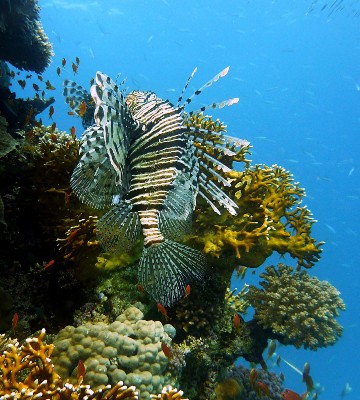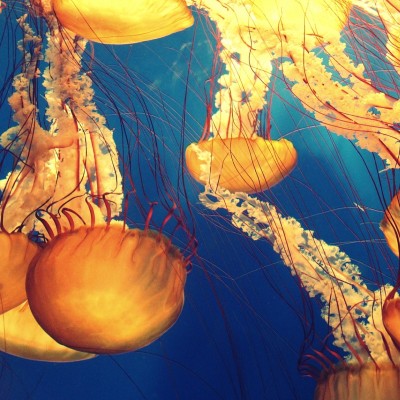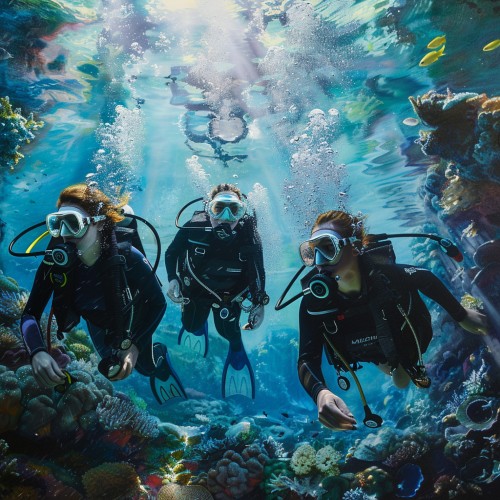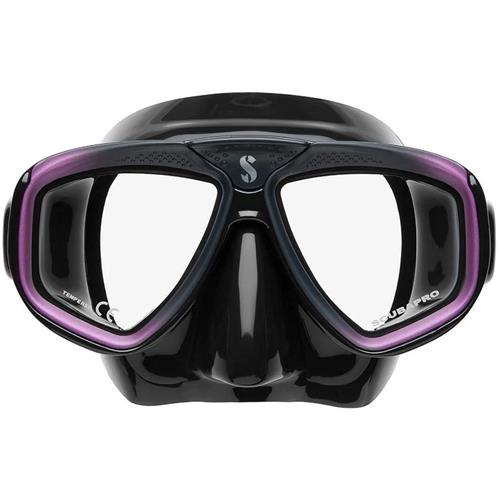- Home
- Diving Destinations
- Reef Mantas and Giant Mantas: A Complete Guide
Table of Contents
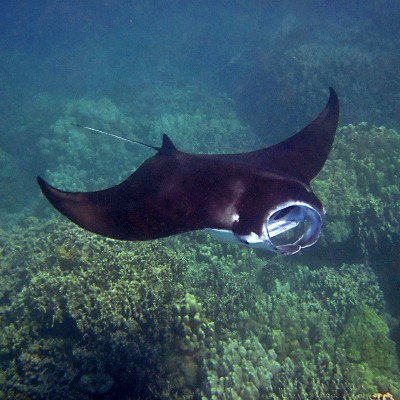
For centuries, Manta Rays have ignited human imagination. Their enigmatic presence has haunted legends and graced ancient carvings. But beyond the whispers of folklore, manta rays are living wonders, ambassadors of a hidden ocean realm. To encounter them is not merely to witness, but to commune with nature’s grand artistry.
What is a Manta Ray?
Mantas, belonging to the genus Mobula, are cartilaginous fishes and members of the ray family, known for their awe-inspiring presence in the world’s oceans.
Mantas are easily recognizable by their large, flat bodies and expansive pectoral fins that can span up to 23 feet or more. This flat appearance is what gives these fish their name – Manta is a Spanish word meaning blanket or cloak.
Mantas are also known for their cephalic lobes, which extend forward from their heads and are used to guide and channel plankton-rich water into their mouths. A new study also suggests that the cephalic lobes may also be used for communication!
The coloration and spot patterns on mantas vary, often serving as unique identifiers for individuals. These patterns, akin to a fingerprint, allow researchers to distinguish between different rays and monitor their movements and behaviors over time.
Perhaps the most amazing fact about Manta Rays is that they have the highest brain-to-body ratio of any fish! They are highly intelligent, and pass the mirror test, meaning that they can recognize themselves in a mirror. Only a few other species, like dolphins and great apes have passed the mirror test.
Reef Mantas vs Oceanic Mantas
Did you know that until 2009, scientists believed that there was only one species of Manta Ray? Rays can be difficult to find and observe, let alone get samples from, but in 2009, a graduate student was able to determine that there is a genetic difference between reef rays and oceanic rays. Now, a new study seeks to determine if there is a third species, one being called the Caribbean Manta Ray.
The Reef Manta
The reef manta (Mobula alfredi) is found throughout the tropical and subtropical Indo-Pacific. This species is typically found in shallower waters and coastal habitats. These rays can grow to a disc size of 16 ft, however, the average size is around 11 ft. Reef mantas only make short migrations, following zooplankton for feeding.
The Oceanic Manta
Also known as the giant manta, these are the largest rays on the planet. The largest oceanic mantas can reach a disc size of 23 ft. An individual can weigh as much as 6,600 lbs! Giant mantas can be found in tropical and temperate waters worldwide! This species migrates often and spends its time in deep waters, traveling through the currents.
What Do Manta Rays Eat?
Manta Rays are filter feeders, which means that they eat by funneling water into their mouths. This motion filters food across the gill plate rows of the mouth while the water gets filtered out. The majority of their diet is plankton, but also includes fish eggs, whelks, bivalves, and shrimp.
How Long Do Manta Rays Live?
It is believed that Mantas can live as long as 50 years, but many do not live that long because of natural predation and overfishing.
Are Manta Rays Solitary Animals?
Although rays tend to be solitary, they do aggregate at feeding spots and during the mating season. Groups of up to 1,500 have been observed, although typical groups consist of 100-200 individuals.
Are Manta Rays Endangered?
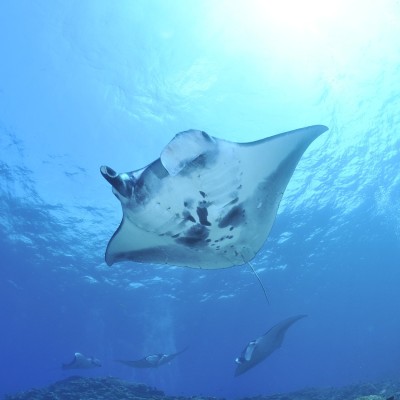
Under the Endangered Species Act (ESA), Manta Rays are listed as Threatened. When a species is listed as threatened, it means that if changes aren’t made, the species will likely become endangered in the foreseeable future.
Manta populations are seriously impacted by commercial fishing, hunted for their grill plates and as bycatch of other species. While not much is known about their reproduction, what is known is that the gestational period is long – around a year – and a female manta only gives birth to one pup every two to three years. It takes a long time for manta rays to reach sexual maturity. These factors make it difficult, if not impossible, for rays to maintain their population.
Is It Safe To Scuba Dive With Manta Rays?
Manta Rays are not dangerous to humans and it is safe for divers to share the water with them.
However, keep in mind, that we, as divers, should always consider the impact that we might have on marine life.
Here are important guidelines to follow if you dive with Mantas:
- Avoid flash photography.
- Look but don’t touch.
- Approach slowly. Never approach from behind, as Mantas have a blind spot behind them.
- Try not to make noise.
- Don’t disturb their activity, this could impact their feeding, resting, cleaning, or mating.
Keep in mind that even if you follow the rules and maintain a respectful distance, Mantas are curious creatures and may approach you! If this occurs, simply relax and enjoy the experience!
Destinations for Diving with Mantas
Discover the best places to see Mantas while scuba diving!
Soccoro Island, Mexico
This uninhabited region, accessible only by liveaboard, is home to more than 500 Giant Mantas from November to June each year. It’s also known as one of the top shark diving destinations in the world! The best time to visit is between February and May. This destination is best for advanced divers.
The Maldives
The Maldives is an island nation that is known for healthy reefs, gorgeous sandy beaches, and fantastic diving opportunities. The world’s largest Manta feeding station can be found here and Mantas can be seen year-round. Keep in mind that the seasons impact plankton blooms and mantas will migrate to different sides of the archipelago depending on the time of the year.
Isla de la Plata, Ecuador
Located 1 1/2 hours off the coast of Ecuador, Isla de la Plata is visited by more than 2,000 Mantas each year. The best time to visit is between June and October. Trips typically need to be booked far in advance, so don’t delay!


